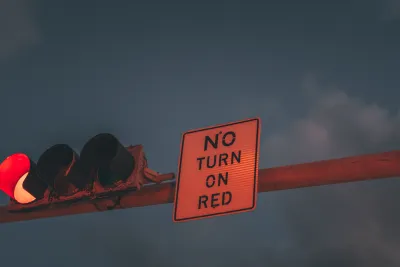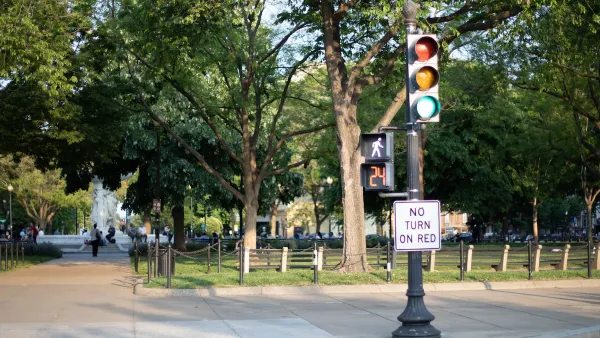Created in the 1970s to help boost gas mileage (with little proof that it had the desired effect), turning right on red creates dangerous situations for pedestrians and cyclists.

In an article in Fast Company, Aimee Rawlins argues that “Right-on-red is an ill-conceived traffic rule that needs to die.” As Rawlins explains, “The policy harms even those pedestrians and cyclists who avoid being struck, forcing them to maneuver around cars that have edged into crosswalks.”
Turning right on red wasn’t always legal on U.S. roads. “Until 50 years ago, only a handful of Western states permitted drivers to turn at a red light. But the 1970s oil crisis prompted the federal government to insist that states change their traffic laws, hoping that right-on-red would reduce gas consumed while cars idle at traffic lights.”
After the policy went into place, “A 1982 study found that the new policy triggered a sharp increase in crashes involving conflicts between a pedestrian or cyclist and a right-turning vehicle. In Ohio, for instance, such collisions rose 57% for pedestrians and 80% for cyclists; in Wisconsin, the figures were 107% and 72%, respectively.”
Turning right on red also frequently forces drivers into the crosswalk, says Bill Schultheiss of Toole Design. “That means you’ve denied the right-of-way to somebody walking or biking because a driver is blocking their path,” Schultheiss adds.
“Since the federal government created much of the current mess with right-on-red, it would be sensible for Congress and the U.S. Department of Transportation to help clean it up” by linking right-on-red regulations to grant funding, for example. “For the moment, the most viable path for dropping right-on-red goes through cities that control their own traffic rules.”
FULL STORY: It’s time to ban ‘right-on-red’

National Parks Layoffs Will Cause Communities to Lose Billions
Thousands of essential park workers were laid off this week, just before the busy spring break season.

Retro-silient?: America’s First “Eco-burb,” The Woodlands Turns 50
A master-planned community north of Houston offers lessons on green infrastructure and resilient design, but falls short of its founder’s lofty affordability and walkability goals.

Delivering for America Plan Will Downgrade Mail Service in at Least 49.5 Percent of Zip Codes
Republican and Democrat lawmakers criticize the plan for its disproportionate negative impact on rural communities.

Test News Post 1
This is a summary

Test News Headline 46
Test for the image on the front page.

Balancing Bombs and Butterflies: How the National Guard Protects a Rare Species
The National Guard at Fort Indiantown Gap uses GIS technology and land management strategies to balance military training with conservation efforts, ensuring the survival of the rare eastern regal fritillary butterfly.
Urban Design for Planners 1: Software Tools
This six-course series explores essential urban design concepts using open source software and equips planners with the tools they need to participate fully in the urban design process.
Planning for Universal Design
Learn the tools for implementing Universal Design in planning regulations.
EMC Planning Group, Inc.
Planetizen
Planetizen
Mpact (formerly Rail~Volution)
Great Falls Development Authority, Inc.
HUDs Office of Policy Development and Research
NYU Wagner Graduate School of Public Service





























